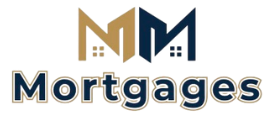Bank of Canada Rate Announcement Jan 25th, 2023
Bank of Canada increases policy interest rate by 25 basis points, continues quantitative tightening.
FOR IMMEDIATE RELEASE
January 25, 2023
The Bank of Canada today increased its target for the overnight rate to 4½%, with the Bank Rate at 4¾% and the deposit rate at 4½%. The Bank is also continuing its policy of quantitative tightening.
Global inflation remains high and broad-based. Inflation is coming down in many countries, largely reflecting lower energy prices as well as improvements in global supply chains. In the United States and Europe, economies are slowing but proving more resilient than was expected at the time of the Bank’s October Monetary Policy Report (MPR). China’s abrupt lifting of COVID-19 restrictions has prompted an upward revision to the growth forecast for China and poses an upside risk to commodity prices. Russia’s war on Ukraine remains a significant source of uncertainty. Financial conditions remain restrictive but have eased since October, and the Canadian dollar has been relatively stable against the US dollar.
The Bank estimates the global economy grew by about 3½% in 2022, and will slow to about 2% in 2023 and 2½% in 2024. This projection is slightly higher than October’s.
In Canada, recent economic growth has been stronger than expected and the economy remains in excess demand. Labour markets are still tight: the unemployment rate is near historic lows and businesses are reporting ongoing difficulty finding workers. However, there is growing evidence that restrictive monetary policy is slowing activity, especially household spending. Consumption growth has moderated from the first half of 2022 and housing market activity has declined substantially. As the effects of interest rate increases continue to work through the economy, spending on consumer services and business investment are expected to slow. Meanwhile, weaker foreign demand will likely weigh on exports. This overall slowdown in activity will allow supply to catch up with demand.
The Bank estimates Canada’s economy grew by 3.6% in 2022, slightly stronger than was projected in October. Growth is expected to stall through the middle of 2023, picking up later in the year. The Bank expects GDP growth of about 1% in 2023 and about 2% in 2024, little changed from the October outlook.
Inflation has declined from 8.1% in June to 6.3% in December, reflecting lower gasoline prices and, more recently, moderating prices for durable goods. Despite this progress, Canadians are still feeling the hardship of high inflation in their essential household expenses, with persistent price increases for food and shelter. Short-term inflation expectations remain elevated. Year-over-year measures of core inflation are still around 5%, but 3-month measures of core inflation have come down, suggesting that core inflation has peaked.
Inflation is projected to come down significantly this year. Lower energy prices, improvements in global supply conditions, and the effects of higher interest rates on demand are expected to bring CPI inflation down to around 3% in the middle of this year and back to the 2% target in 2024.
With persistent excess demand putting continued upward pressure on many prices, Governing Council decided to increase the policy interest rate by a further 25 basis points. The Bank’s ongoing program of quantitative tightening is complementing the restrictive stance of the policy rate. If economic developments evolve broadly in line with the MPR outlook, Governing Council expects to hold the policy rate at its current level while it assesses the impact of the cumulative interest rate increases. Governing Council is prepared to increase the policy rate further if needed to return inflation to the 2% target, and remains resolute in its commitment to restoring price stability for Canadians.
Information note
The next scheduled date for announcing the overnight rate target is March 8, 2023. The Bank will publish its next full outlook for the economy and inflation, including risks to the projection, in the MPR on April 12, 2023.
Read the January 25th, 2023 Monetary Policy Report.





